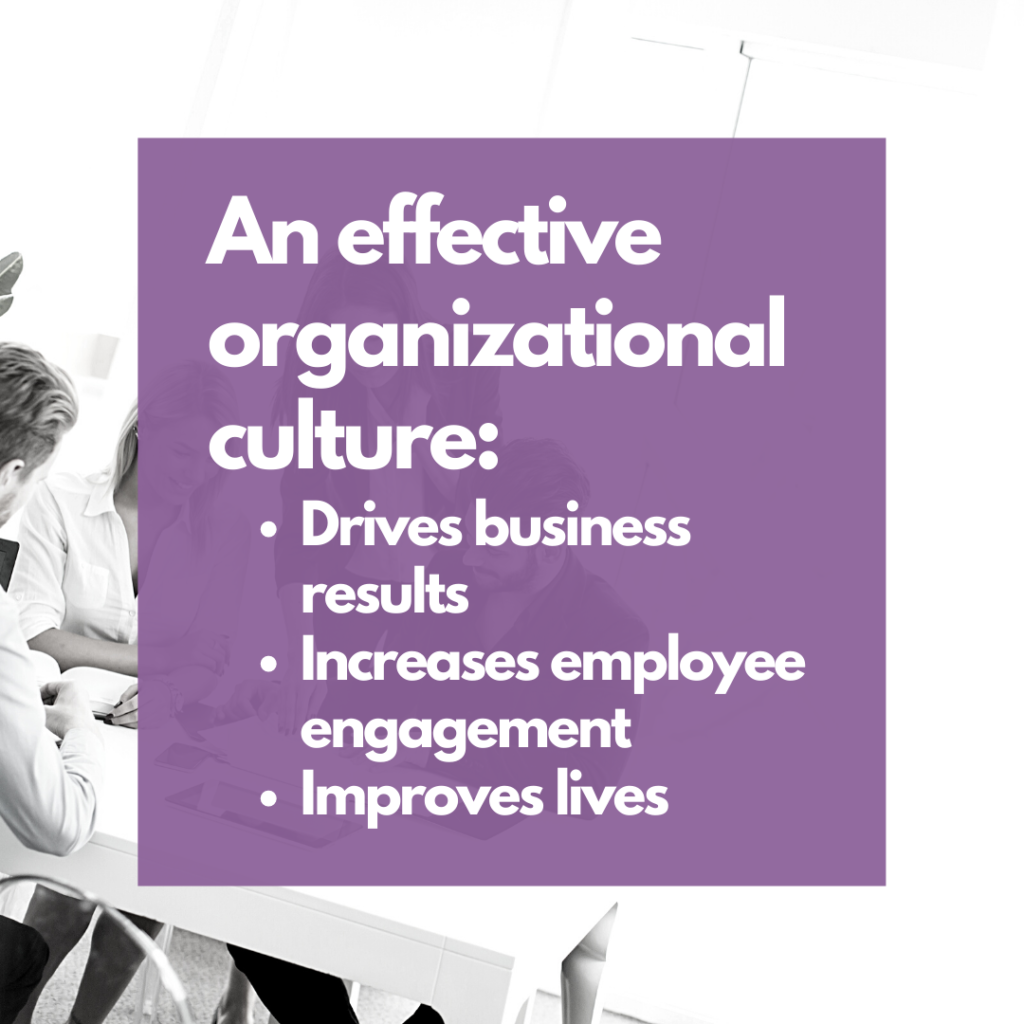As the CEO of a global technology contracting firm, you know culture matters. And in the last few years, you put your money where your mouth is – in a big way – working to create an effective culture at your company. One year ago, you hired Randolph as the new Vice President of Corporate Culture. He’s an inspiring and intelligent person who has made lots of friends inside the firm, and people seem to like the new things he’s implemented. The new yoga classes, take-your-dog-to-work days, rooftop meetings and cross-functional team retreats are getting rave reviews. But you’ve got to admit, sometimes it all just seems like a bunch of fluff. Is it really making a difference in your bottom line?
This week, you’re working on Randolph’s first performance review, and you’re struggling. How can you measure the changes, if any, that he’s made in your company’s culture? A whole lot of money has been spent on these initiatives, but now that it’s time to report and measure, and you want to make sure you’re counting the right wins. It’s a deceptively simple truth: if you want to optimize something, you must first know what you are optimizing for. So, what makes an effective culture? And how can you measure it?
Effective Culture
Organizational culture is an extremely complex attribute of an organization. It’s difficult to analyze, difficult to measure, difficult to change or manage, and even difficult to define. However, to create the results you want in your organization, we must first start by defining what is meant by an effective culture. The failure to fully define and understand the nature of organizational culture leads to a lot of failed attempts to effectively leverage it to drive company performance and success.
There are three criteria that can be used to determine whether an organization’s culture is effective. An effective organizational culture:
- Drives business results
- Increases employee engagement
- Improves lives

Drives Business Results
An effective organizational culture must drive business results. Organizations exist to create value and generate profits for their owners/shareholders. Every division of your firm has performance criteria which are intricately linked to the core mission. So, one of the goals of an effective culture is to assist your organization in achieving these outcomes. The best way to evaluate the culture’s ability to support the organization’s ability to achieve business results is by assessing it through the lens of the company strategy.
Company strategy captures how a company intends to compete and deliver value while maximizing profit. Consequently, assuming the company has accurately developed a strategy that enables it to compete and win (which we define as accomplishing its goals), an effective culture is one that is aligned with this strategy. When there is alignment between strategy and culture, the attitudes, beliefs and resulting behaviors of employees are naturally those which are required to execute the strategy. This removes the need for burdensome enforcement mechanisms to drive the needed behaviors, like adding multiple layers of approvals into a process or requiring reams of documentation and record keeping. Not only do such mechanisms deplete the energy and resources of the company, they also often fail. This is exactly why Peter Drucker famously said, “Culture eats strategy for breakfast.” It doesn’t mean that strategy is unimportant – on the contrary, an effective strategy is critically important to organizational success – rather, it means that when the two are in conflict, culture always wins.
Therefore, one goal in creating an effective culture is to intentionally design it around your strategy. This statement sounds much more linear than it is. In reality, there is a feedback loop where your culture naturally influences the strategy that you select and the strategy influences the design of your culture. Consequently, it can be an iterative process – especially if neither are well established.
Start by defining your strategy and ensuring that it is clear, understood, and supported by the leadership team. This strategy becomes the North Star for aligning your culture and your organization design. Share on XIncreases Employee Engagement
The second criterion is that an effective culture must drive employee engagement. One Gallup study found that companies with the highest levels of employee engagement were 22% more profitable and 21% more productive, while another of their studies found that companies with engaged employees outperformed their peers by 147% in earnings per share. Furthermore, the opposite of engaged isn’t necessarily a neutral state; it is active disengagement, which is toxic. A single “toxic” employee can cost as much as $12,000 per year and it’s estimated that companies are losing over $500 billion due to disengagement annually.
Because these figures are truly astounding, we believe that engagement is significant and unique enough to warrant discussion as a separate criterion. Including engagement as a criterion allows us to focus on one of the key elements of performance that produces the business results in the first criterion. Here we are looking at the extent to which employees feel passionate about their jobs and how committed they are to the company which determines how much they are willing to go above and beyond in their work. Engagement is a fascinating combination of heart and mind composed of an intrinsic emotional connection to the business and its purpose along with a rational evaluation of the benefits, conditions and quality of employment.

Improves Lives
The third and final criterion of an effective culture is that it must improve lives. This may sound somewhat idealistic, but we truly do believe that providing a healthy and engaging work environment for people to come to every day greatly improves their lives. We also believe that companies have a role and a responsibility beyond just earnings – both within the lives of their employees and society. The idea of corporate social responsibility has gotten a lot of traction in recent years and most companies are practicing some form of this. Consequently, we don’t feel that it is a stretch to say that companies have the ability to change the world to make it a better place and improve people’s lives. An effective organizational culture not only supports but produces this type of social responsibility as an extension of who the company is.
Even without such lofty goals, an effective culture will still improve lives because of its impact on the individuals within the organization. We spend a tremendous amount of time at work – roughly 1/3 of our lives – and the quality of the working environment directly impacts the quality of our lives. For many that impact reaches beyond the walls of the office as they take it home with them. So when we create a healthy work environment through an effective culture, often times we are improving the lives of both the employees and their families. By creating a positive work environment and reducing the negative impacts of stress and burnout, an effective culture can have a tremendous positive impact on peoples’ lives.
Let’s bring this all back home, to you as a CEO. When it comes to measuring the impact of cultural change at your company, the criteria you want to use are business results, employee engagement, and improving lives. With these yardsticks in hand, it becomes a little easier to measure Randolph’s first year of performance as your VP of Corporate Culture, and to set goals and deliverables for the coming year. As the top executive at your company, you know when it’s time to call in the experts. Here at Gallaher Edge, we can come alongside your team and help you create a culture that will have you reaping the benefit for years, even decades to come. Get started today by joining our FREE Insider Edge platform, where you (and your team!) can take advantage of microlearning video-based guidance.
Ready to take your leadership to the next level? Get your FREE copy of my eBook, Level Up: 3 Steps to Be a Better Leader. Click here to download!


One reply on “Think Your Company’s Culture is Effective? Use These 3 Hallmarks to Evaluate It”
[…] our last blog we looked at the three criteria used to define and measure an effective culture. Our goal is […]